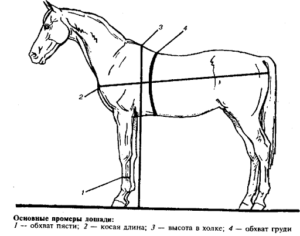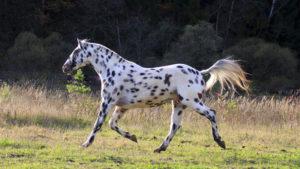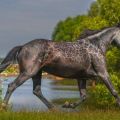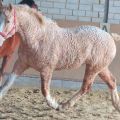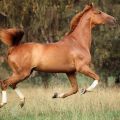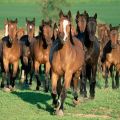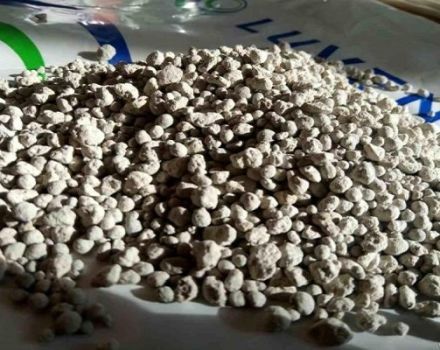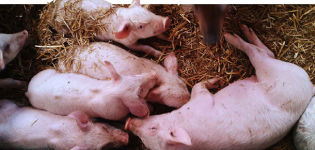Description and characteristics of horses of the Shire breed, conditions of detention and breeding
Horses belong to a group of animals with which humans can closely interact and use them to achieve specific goals. There are a huge number of breeds of such animals. However, Shire horses are distinguished among all of them. They are considered by many to be the largest domesticated animals.
The origin story of the Shire horse
Before you start growing Shire horses, you need to familiarize yourself with the history of their origin. Animals belonging to this breed are native to England. Moreover, the ancestors of such horses are considered the most ancient heavy-harness breed. The exact date of her appearance remains unknown to this day.
It is known that such animals were introduced to England in the middle of the sixteenth century. Then the government decided to seriously engage in breeding such large animals. At that time, this decision was very important for the state. The government issued a special decree that forbade peasants to have large horses on their farm. They had to give them to the state in order to be used in the future to equip the army.
Characteristics of the breed
The Shire breed has some distinctive features, which should be familiar to every person planning to breed such animals.
Exterior and suits of giants
The main feature of the horses that belong to this breed is their broad forehead and large head. They also have a wide and muscular neck. The horses' chest is also considerable and reaches 180-190 centimeters in girth. Moreover, their hooves are small and flat. Basically, the Shire breed has a sled exterior. However, they have certain distinctive features. For example, they have a short back and a too long neck. These features are unusual for standard draft horses.

Filly are not as large as males, and therefore are significantly inferior to them in size. At the withers, they reach about one hundred and forty centimeters. Moreover, the largest representatives of the breed can grow up to 180-185 centimeters in height.
Temperament and learning ability of the animal
Many farmers who want to raise such animals on their plots are interested in the characteristics of their temperament. Some consider these horses to be aggressive, but in reality they are not.Despite their considerable size and formidable appearance, these horses are very calm and kind. If you treat them well, they will never show aggression towards their master. The calm temperament of the horses encourages their training. They lend themselves to training and management without problems.
Horses quickly learn different commands and remain loyal to their owner.
Where are British heavy trucks used?
Initially, horses from this breed belonged to the category of heavy trucks. They were often used for plowing the ground or traveling by carriage. Some bought them to practice horse riding. However, over time, the quality of the roads improved significantly, and such animals were no longer used in harnesses. Shires are now considered fast-learning animals that participate in special competitions or shows. For example, in England, races are held for them at a distance of up to three kilometers. However, even today, animals are used as a traction breed. Most often they are used in forestry.

Pros and cons of content
Shires, like other horse breeds, have several advantages and disadvantages that you should be familiar with. Among the advantages are the following:
- high level of carrying capacity, thanks to which it is possible to transport heavy loads;
- hard work and endurance;
- unpretentiousness in nutrition;
- ease of caring for animals;
- calm temperament and learning ability;
- friendly attitude towards people and animals.
Despite the considerable number of advantages, the Shires have one serious drawback. The main disadvantage of keeping such horses is their great appetite. An adult eats twice as much food per day than horses of any other breed.
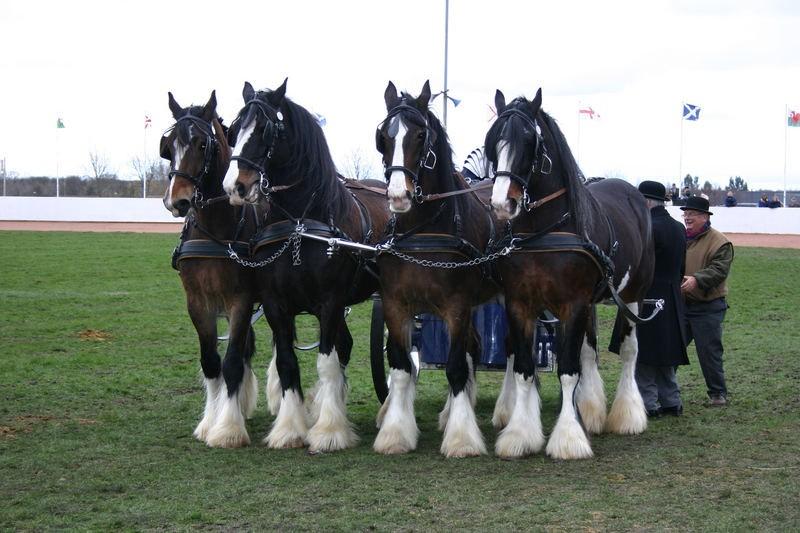
Growing and caring for animals
Before you start raising animals, you need to familiarize yourself with the features of caring for them.
Room requirements
The room in which the horses will be kept must meet the following requirements:
- Walls and floor coverings must be made of high quality thermal insulation materials. When creating the floor, it is recommended to use non-slip materials to prevent injury to animals. It must be sprinkled with straw or sawdust. Also, the surface can be covered with expanded clay to prevent mold or mildew.
- Partitions between stalls in a barn should be made of durable metal or wood. Their height should not be more than one meter.
- A special ventilation hole is made in each stall. This promotes indoor air circulation.
- Doors must be fitted with three galvanized bolts. This prevents the horse from leaving the stall on its own.
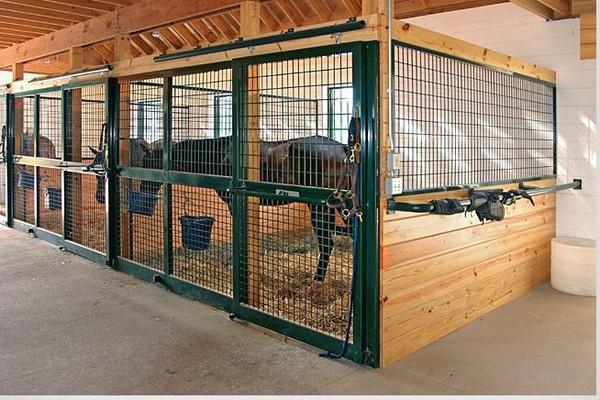
Feeding features
The key to the health of any horse is its proper nutrition. Despite the fact that this breed is unpretentious in food, there are some nutritional requirements:
- Such animals need a lot of food. They eat about 25-30 kilograms of grass per day.
- The horses' diet is supplemented with food that contains many vitamins. It includes apples, beets, carrots or cabbage. In this case, foods containing vitamins should be given daily.
- Animals should not be given concentrated feed, as well as feeding to stimulate growth.
- Piglets need to be watered only with clean water, without additional impurities.
Hygiene and horse care
Every horse needs proper care. The tail and mane must be regularly washed and cleaned of residues of dirt. They should be periodically combed and braided if the weather is too hot outside. On summer days, horses should be regularly bathed in cool water. You can also use special horse shampoos.
After finishing the water procedures, the horse's body is thoroughly wiped with a dry towel.
It is necessary to periodically clean the stall so that there is no unpleasant smell. Waste should not be allowed to accumulate inside, as they contribute to the growth of bacteria.
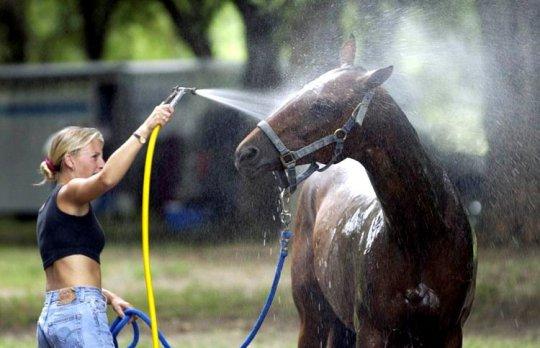
Grazing
Animals are grazed in the summer, when there is a lot of green grass outside. Most often, horses are released into pasture in the second half of May and June. Animals should graze for 2-3 hours daily. It is not worth overfeeding them and therefore it is not necessary to leave them on the pasture for a long time. They stop grazing closer to mid-August, when the amount of green grass decreases.
Horseshoe
It's no secret that over time, horses' hooves begin to wear out. Moreover, if they live in a natural environment, this happens slowly. For horses living on a farm, hooves are erased many times faster. Therefore, it is recommended to do a shoe so that they do not wear off so quickly. Hoof shoeing should be done by professionals who are well versed in this. It's not worth installing horseshoes on your own.

Vaccinations and disease prevention
When breeding the Shire breed, everything must be done to prevent the emergence and development of diseases. There are preventive measures that can help prevent disease:
- regular vaccination of animals in accordance with the recommendations of the veterinarian;
- disinfection of the stables, as well as drinkers and feeders inside;
- insulation of the shed so that there are no drafts inside;
- keeping the stable dry and well lit;
- anti-tick treatment in spring and summer;
- adding vitamin complexes to the diet to strengthen immunity.
Reproduction and lifespan of the breed
People who want to breed this breed should pay attention not only to the appearance of the animal, but also to whether it meets the standard. The mare should have almost the same physique as the male. It is allowed that it be slightly smaller in parameters. For mating, it is recommended to use a purebred stallion in order to get good and clean offspring. Thoroughbred horses can live for more than thirty years. However, life expectancy depends on the conditions in which they were kept.

Average cost of a horse
Anyone can purchase an English horse. However, before that you need to figure out how much it costs. The cost of such an animal is quite high. Sometimes it reaches one and a half million rubles. The average price is 350-400 thousand rubles.
The final cost of a stallion or mare depends on several factors. It can be influenced by gender, age and health.
Interesting facts about the breed
There are some interesting facts about the Shire breed:
- these horses are considered the largest, as some of them grow up to two meters;
- initially, stallions were used not for work in the field, but for transporting goods;
- nowadays some of the breweries in England use such horses to transport beer.
Conclusion
Shire is considered a popular horse breed that many farmers have heard of. Before breeding such horses, you need to familiarize yourself with their characteristics and the features of caring for them.
